Music
Trailers
DailyVideos
India
Pakistan
Afghanistan
Bangladesh
Srilanka
Nepal
Thailand
StockMarket
Business
Technology
Startup
Trending Videos
Coupons
Football
Search
Download App in Playstore
Download App
Best Collections
Technology
Many TikTok videos don&t start from scratch, so neither can its competitors. TikTok is all about remixes where users shoot a new video to recontextualize audio pulled from someone elseclip, or riff on an existing meme or concept. That only works because TikTokhad time to build up an immense armory of content to draw inspiration from.
Creators will find themselves unequipped trying to get started on TikTok copycats including Facebook Lasso, and Instagram Reels which is testing in Brazil. Direct competitors like Triller and Dubsmash are racing to build up their archives. YouTube Shorts, which The Information today reported is in development, only has a shot if Google lets users harness the 5 billion videos people already watch on YouTube each day.
This is the power of what I call &content network effect&: Each piece of content adds value to the rest. ThatTikTok.
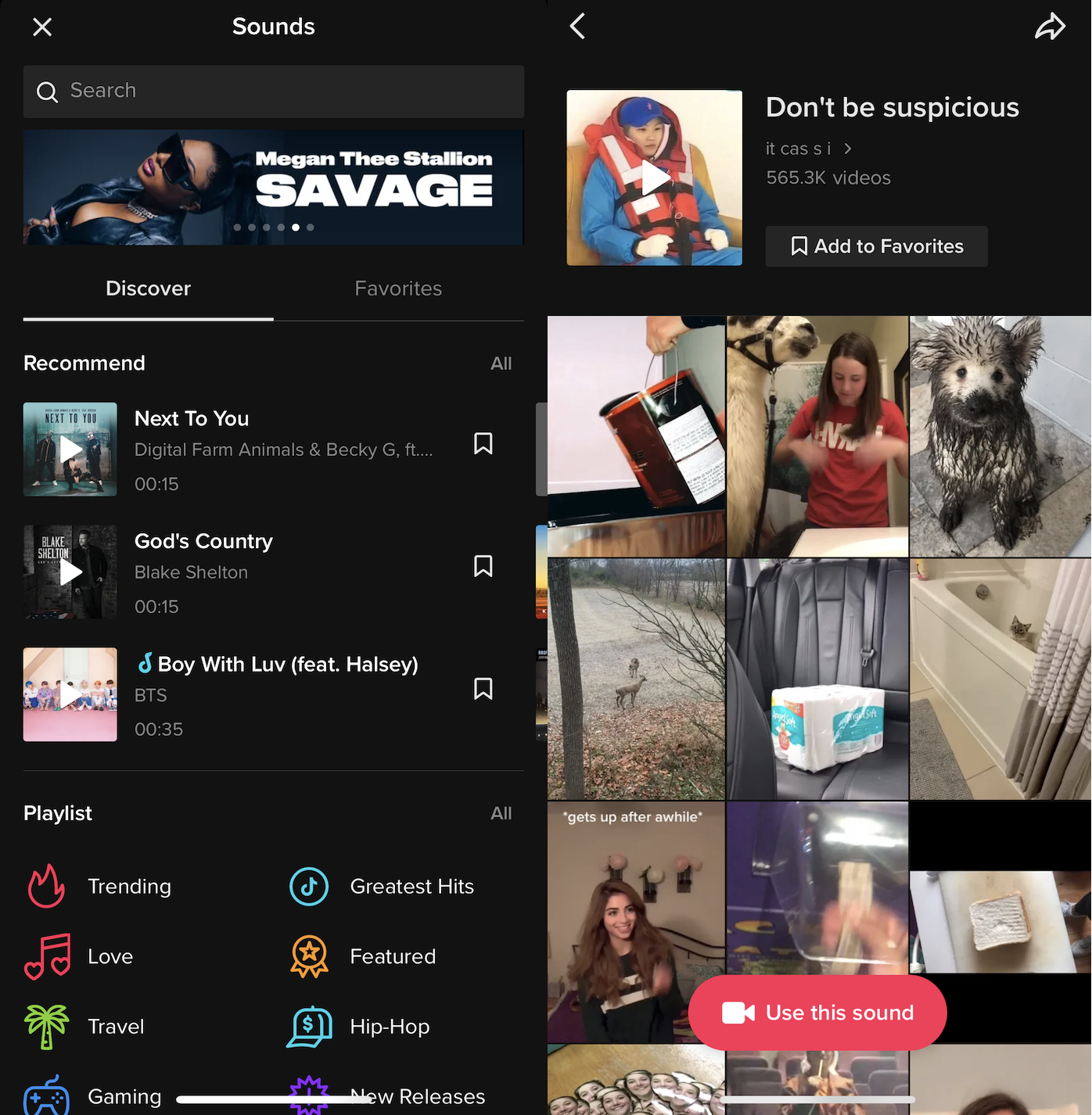
You&re likely familiar with traditional network effect — ‘a phenomenon whereby a product or service gains additional value as more people use it.& Itnot just the network itself that gains value, as the value delivered to each user increases too. Todaytop social networks are shining examples. The more people there are on Facebook, Instagram, or Twitter, the more people you can connect to, and the more material their relevance algorithms can draw on to fill your feeds.
If you had to choose between using two identical social networks, you&re probably going to pick the one with more friends or creators already onboard. Network effects raise the switching cost of moving to a different network. Even if it has better features, fewer ads, or less misinformation and bullying, you&re unlikely to leave a robust network behind and decamp to a sparser one. That makes scaled social networks difficult to Disrupt. All the top ones have been around for almost a decade or more.
Except for TikTok. The Chinese music/video app has managed to demonstrate a new concept of &content network effect&. In its case, each video uploaded to the app makes every future potential video more valuable. Thatbecause all the content on TikTok serves as remix fodder for the rest. Every song, dance, joke, prank, and monologue generates resources for other creators to exploit. Ita bottomless well of inspiration.
Remixability, the ultimate creative tool
TikTok productizes remix culture by making it easy to &use this sound&. Tap the audio button on any video and it becomes yours. Click through and you&ll see all the other videos that use it. TikTok even offers a whole search engine for sorting through sounds by categories like Trending, Greatest Hits, Love, Gaming, and travel. Sometimes remixes are based on an idea rather than an audio. #FlipTheSwitch sees couples instantly swapping clothes when the light flicks off, and has collected over 3.6 billion videos across over 500,000 remixed versions of the video.
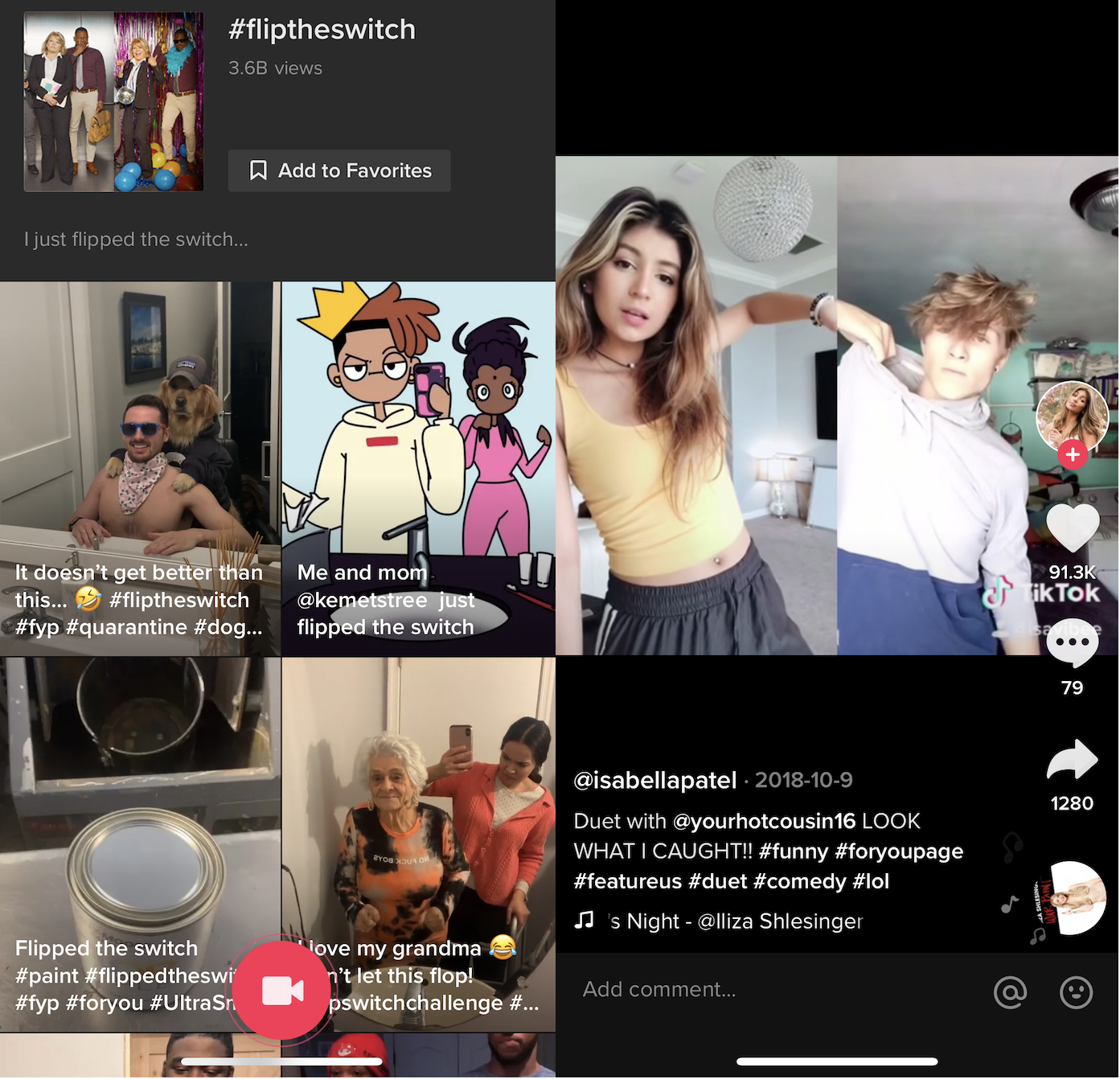
You can even duet with the original creator, sharing your video and theirs side-by-side simultaneously. A solo performance becomes a chorus as more duets are hitched together. Meanwhile, remixes of remixes of remixes provide an esoteric reward for hardcore users who recognize how a gag has evolved or spiraled into absurdity.
Other apps in the past have spawned video responses, hashtags, quote-tweets, surveys, and chain letters and other ways for pieces of content to interact or iterate. And therealways been parodies. But TikTok proves the power of forging a social app with content network effect at its core.
Facilitating remixes offers a way to lower the bar for producing user generated content. You&d don&t have to be astoundingly creative or original to make something entertaining. Each individuallife experiences inform their perspective that could let them interpret an idea in a new way.
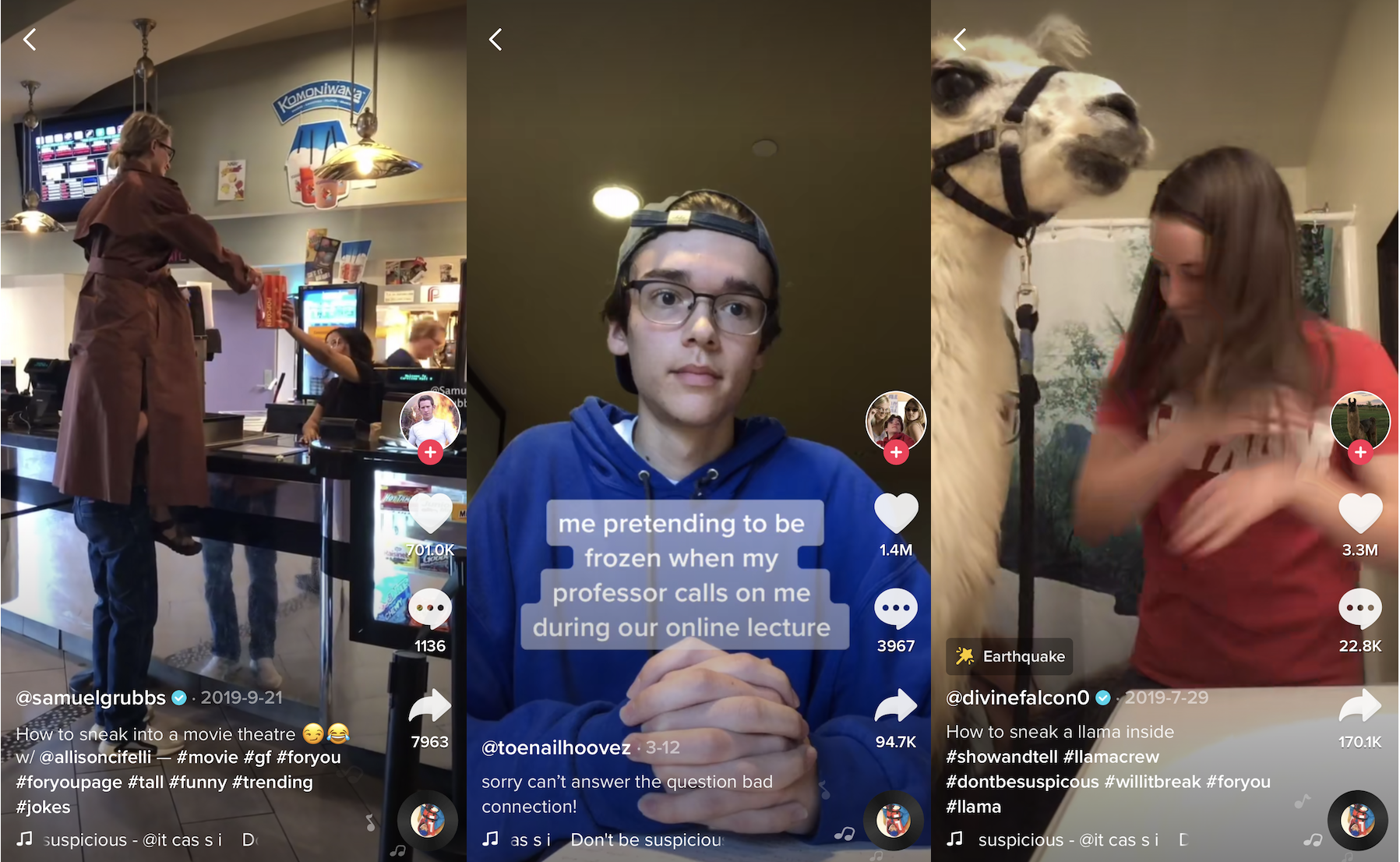 What began with someone ripping audio of two people chanting &don&t be Suspicious, don&t be suspicious& while sneaking through a graveyard in TV show Parks - Recs led to people lipsyncing it while trying to escape their infantroom without waking them up, leaving the house wearing clothes they stole from their sistercloset, trying to keep a llama as a pet, and photoshopping themselves to look taller. Unless someonealready done the work to record an audio clip, therenothing to inspire and enable others to put their spin on it.
What began with someone ripping audio of two people chanting &don&t be Suspicious, don&t be suspicious& while sneaking through a graveyard in TV show Parks - Recs led to people lipsyncing it while trying to escape their infantroom without waking them up, leaving the house wearing clothes they stole from their sistercloset, trying to keep a llama as a pet, and photoshopping themselves to look taller. Unless someonealready done the work to record an audio clip, therenothing to inspire and enable others to put their spin on it.
TikTokarchive vs the world
Thatwhy I wrote that Mark Zuckerberg misunderstands the huge threat of TikTok after the CEO told Facebookstaff that &I kind of think about TikTok as if it were Explore for Stories&. Facebook and Instagram found massive success cloning Snapchat Stories because all they had to do was copy its features. Stories are autobiographical life vlogging. All you need are the creative tools, which Instagram and Facebook rebuilt, and people to share to, which the apps had billions of.
But TikTok isn&t about sharing what you&re up to like Stories that typically start from scratch since each userlife is different. Itmicro-entertainment powered by content network effect. If TikTok competitors give people the same video recording features and distribution potential, they&ll still be missing the archive of source material.
FacebookLasso looks just like TikTok but itfailed to gain steam since launching in November 2018. Instagram Reels smartly copies TikTokremixing tools, but if the Brazilian tests go well and it eventually launches in English, it will start out flat footed.
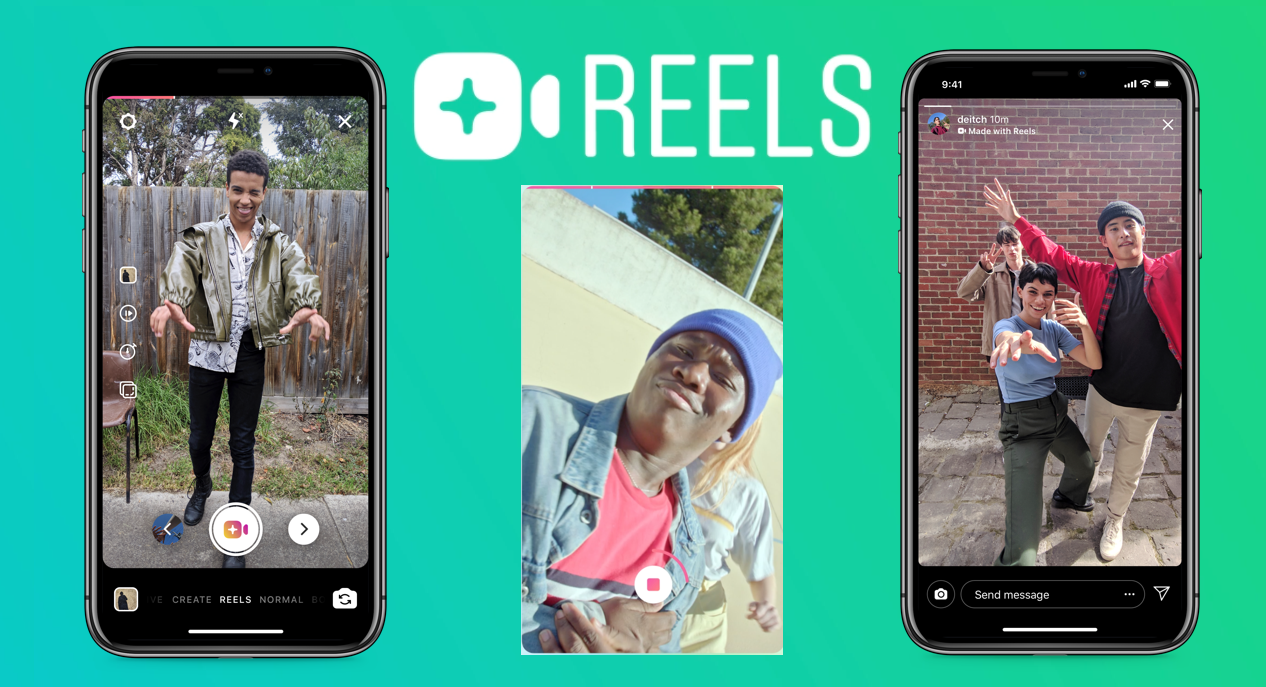
When YouTube launches Shorts, as The InformationAlex Heath and Jessica Toonkel report itplanning to do before the end of the year, it will be buried inside its main app. That could make it impossible to compete with a dedicated app like TikTok that opens straight to its For You page. Its one saving grace would be if YouTube unlocks its entire database of videos for remixing.
Thanks to its position as the default place to host videos and its experience with searchability that Facebook and Instagram lack, YouTube Shorts could at least have all the ingredients necessary. But given YouTubenon-stop failures in social with everything from Google+ to YouTube Stories to its dozen deadpooled messaging apps, it may not have the chef skills necessary to combine them.
[Postscript: Or maybe YouTube will be worse at cloning TikTok than anyone. Record labels and YouTube should understand that short videos promote rather than pirate music, as TikTok propelling Lil Nas X and many other musicians up the charts prove. But if YouTube ruthlessly applies Content ID and takes down Shorts with unauthorized audio, the feature is dead in the water.]
Other social networks should consider how the concept applies to them. Could Facebook turn your friends& photos into collage materials? Could Instagram let you share themed collections of your favorite posts? Remix culture isn&t going away, so neither will the value of fostering content network effects. With video consumption outpacing professional production, remixes are how the world will stay entertained and how amateurs can contribute creations worthy of going viral.
- Details
- Category: Technology Today
Read more: 'Content network impact' makes TikTok difficult to copy
Write comment (96 Comments)A European coalition of techies and scientists drawn from at least eight countries, and led by Germany's Fraunhofer Heinrich Hertz Institute for telecoms (HHI), is working on contacts-tracing proximity technology for COVID-19 that's designed to comply with the region's strict privacy rules — officially unveiling the effort today.
China-style individual-level location-tracking of people by states via their smartphones even for a public health purpose is hard to imagine in Europe — which has a long history of legal protection for individual privacy. However the coronavirus pandemic is applying pressure to the region's data protection model, as governments turn to data and mobile technologies to seek help with tracking the spread of the virus, supporting their public health response and mitigating wider social and economic impacts.
Scores of apps are popping up across Europe aimed at attacking coronavirus from different angles. European privacy not-for-profit, noyb, is keeping an updated list of approaches, both led by governments and private sector projects, to use personal data to combat SARS-CoV-2 — with examples so far including contacts tracing, lockdown or quarantine enforcement and COVID-19 self-assessment.
The efficacy of such apps is unclear — but the demand for tech and data to fuel such efforts is coming from all over the place.
In the UK the government has been quick to call in tech giants, including Google, Microsoft and Palantir, to help the National Health Service determine where resources need to be sent during the pandemic. While the European Commission has been leaning on regional telcos to hand over user location data to carry out coronavirus tracking — albeit in aggregated and anonymized form.
The newly unveiled Pan-European Privacy-Preserving Proximity Tracing (PEPP-PT) project is a response to the coronavirus pandemic generating a huge spike in demand for citizens' data that's intended to offer not just an another app — but what's described as 'a fully privacy-preserving approach' to COVID-19 contacts tracing.
The core idea is to leverage smartphone technology to help disrupt the next wave of infections by notifying individuals who have come into close contact with an infected person — via the proxy of their smartphones having been near enough to carry out a Bluetooth handshake. So far so standard. But the coalition behind the effort wants to steer developments in such a way that the EU response to COVID-19 doesn't drift towards China-style state surveillance of citizens.
While, for the moment, strict quarantine measures remain in place across much of Europe there may be less imperative for governments to rip up the best practice rulebook to intrude on citizens' privacy, given the majority of people are locked down at home. But the looming question is what happens when restrictions on daily life are lifted?
Contacts tracing — as a way to offer a chance for interventions that can break any new infection chains — is being touted as a key component of preventing a second wave of coronavirus infections by some, with examples such as Singapore's TraceTogether app being eyed up by regional lawmakers.
Singapore does appear to have had some success in keeping a second wave of infections from turning into a major outbreak, via an aggressive testing and contacts-tracing regime. But what a small island city-state with a population of less than 6M can do vs a trading bloc of 27 different nations whose collective population exceeds 500M doesn't necessarily seem immediately comparable.
Europe isn't going to have a single coronavirus tracing app. It's already got a patchwork. Hence the people behind PEPP-PT offering a set of 'standards, technology, and services' to countries and developers to plug into to get a standardized COVID-19 contacts-tracing approach up and running across the bloc.
The other very European flavored piece here is privacy — and privacy law. 'Enforcement of data protection, anonymization, GDPR [the EU's General Data Protection Regulation] compliance, and security' are baked in, is the top-line claim.
'PEPP-PR was explicitly created to adhere to strong European privacy and data protection laws and principles,' the group writes in an online manifesto. 'The idea is to make the technology available to as many countries, managers of infectious disease responses, and developers as quickly and as easily as possible.
'The technical mechanisms and standards provided by PEPP-PT fully protect privacy and leverage the possibilities and features of digital technology to maximize speed and real-time capability of any national pandemic response.'
Hans-Christian Boos, one of the project's co-initiators — and the founder of an AI company called Arago 'discussed the initiative with German newspaper Der Spiegel, telling it: 'We collect no location data, no movement profiles, no contact information and no identifiable features of the end devices.'
The newspaper reports PEPP-PT's approach means apps aligning to this standard would generate only temporary IDs — to avoid individuals being identified. Two or more smartphones running an app that uses the tech and has Bluetooth enabled when they come into proximity would exchange their respective IDs — saving them locally on the device in an encrypted form, according to the report.
Der Spiegel writes that should a user of the app subsequently be diagnosed with coronavirus their doctor would be able to ask them to transfer the contact list to a central server. The doctor would then be able to use the system to warn affected IDs they have had contact with a person who has since been diagnosed with the virus — meaning those at risk individuals could be proactively tested and/or self-isolate.
On its website PEPP-PT explains the approach thus:
Mode 1 If a user is not tested or has tested negative, the anonymous proximity history remains encrypted on the user's phone and cannot be viewed or transmitted by anybody. At any point in time, only the proximity history that could be relevant for virus transmission is saved, and earlier history is continuously deleted.
Mode 2 If the user of phone A has been confirmed to be SARS-CoV-2 positive, the health authorities will contact user A and provide a TAN code to the user that ensures potential malware cannot inject incorrect infection information into the PEPP-PT system. The user uses this TAN code to voluntarily provide information to the national trust service that permits the notification of PEPP-PT apps recorded in the proximity history and hence potentially infected. Since this history contains anonymous identifiers, neither person can be aware of the other's identity.
Providing further detail of what it envisages as 'Country-dependent trust service operation', it writes: 'The anonymous IDs contain encrypted mechanisms to identify the country of each app that uses PEPP-PT. Using that information, anonymous IDs are handled in a country-specific manner.'
While on healthcare processing is suggests: 'A process for how to inform and manage exposed contacts can be defined on a country by country basis.'
Among the other features of PEPP-PT's mechanisms the group lists in its manifesto are:
- Backend architecture and technology that can be deployed into local IT infrastructure and can handle hundreds of millions of devices and users per country instantly.
- Managing the partner network of national initiatives and providing APIs for integration of PEPP-PT features and functionalities into national health processes (test, communication, …) and national system processes (health logistics, economy logistics, …) giving many local initiatives a local backbone architecture that enforces GDPR and ensures scalability.
- Certification Service to test and approve local implementations to be using the PEPP-PT mechanisms as advertised and thus inheriting the privacy and security testing and approval PEPP-PT mechanisms offer.
Having a standardized approach that could be plugged into a variety of apps would allow for contacts tracing to work across borders — i.e. even if different apps are popular in different EU countries — an important consideration for the bloc, which has 27 Member States.
However there may be questions about the robustness of the privacy protection designed into the approach — if, for example, pseudonymized data is centralized on a server that doctors can access there could be a risk of it leaking and being re-identified. And identification of individual device holders would be legally risky.
Europe's lead data regulator, the EDPS, recently made a point of tweeting to warn an MEP (and former EC digital commissioner) against the legality of applying Singapore-style Bluetooth-powered contacts tracing in the EU — writing: 'Please be cautious comparing Singapore examples with European situation. Remember Singapore has a very specific legal regime on identification of device holder.'
A spokesman for the EDPS told us it's in contact with data protection agencies of the Member States involved in the PEPP-PT project to collect 'relevant information'.
'The general principles presented by EDPB on 20 March, and by EDPS on 24 March are still relevant in that context,' the spokesman added — referring to guidance issued by the privacy regulators last month in which they encouraged anonymization and aggregation should Member States want to use mobile location data for monitoring, containing or mitigating the spread of COVID-19. At least in the first instance.
'When it is not possible to only process anonymous data, the ePrivacy Directive enables Member States to introduce legislative measures to safeguard public security (Art. 15),' the EDPB further noted.
'If measures allowing for the processing of non-anonymised location data are introduced, a Member State is obliged to put in place adequate safeguards, such as providing individuals of electronic communication services the right to a judicial remedy.'
We reached out to the HHI with questions about the PEPP-PT project and were referred to Boos — but at the time of writing had been unable to speak to him.
'The PEPP-PT system is being created by a multi-national European team,' the HHI writes in a press release about the effort. 'It is an anonymous and privacy-preserving digital contact tracing approach, which is in full compliance with GDPR and can also be used when traveling between countries through an anonymous multi-country exchange mechanism. No personal data, no location, no Mac-Id of any user is stored or transmitted. PEPP-PT is designed to be incorporated in national corona mobile phone apps as a contact tracing functionality and allows for the integration into the processes of national health services. The solution is offered to be shared openly with any country, given the commitment to achieve interoperability so that the anonymous multi-country exchange mechanism remains functional.'
'PEPP-PT's international team consists of more than 130 members working across more than seven European countries and includes scientists, technologists, and experts from well-known research institutions and companies,' it adds.
'The result of the team's work will be owned by a non-profit organization so that the technology and standards are available to all. Our priorities are the well being of world citizens today and the development of tools to limit the impact of future pandemics — all while conforming to European norms and standards.'
The PEPP-PT says its technology-focused efforts are being financed through donations. Per its website, it says it's adopted the WHO standards for such financing — to 'avoid any external influence'.
Of course for the effort to be useful it relies on EU citizens voluntarily downloading one of the aligned contacts tracing apps — and carrying their smartphone everywhere they go, with Bluetooth enabled.
Without substantial penetration of regional smartphones it's questionable how much of an impact this initiative, or any contacts tracing technology, could have. Although if such tech were able to break even some infection chains people might argue it's not wasted effort.
Notably, there are signs Europeans are willing to contribute to a public healthcare cause by doing their bit digitally — such as a self-reporting COVID-19 tracking app which last week racked up 750,000 downloads in the UK in 24 hours.
But, at the same time, contacts tracing apps are facing scepticism over their ability to contribute to the fight against COVID-19. Not everyone carries a smartphone, nor knows how to download an app, for instance. There's plenty of people who would fall outside such a digital net.
Meanwhile, while there's clearly been a big scramble across the region, at both government and grassroots level, to mobilize digital technology for a public health emergency cause there's arguably greater imperative to direct effort and resources at scaling up coronavirus testing programs — an area where most European countries continue to lag.
Germany — where some of the key backers of the PEPP-PT are from — being the most notable exception.
- Details
- Category: Technology Today
Read more: ndividual-level location-tracking of people by states via their smartphones
Write comment (100 Comments)A recent update from Amazon has made it easier for Apple customers to buy or rent movies from its Prime Video app. Before, customers using the Prime Video app from an iOS device or Apple TV would have to first purchase or rent the movie elsewhere — like through the Amazon website or a Prime Video app on another device, such as the Fire TV, Roku or an Android device. Now, Prime Video users can make the purchase directly through the app instead.
The changes weren&t formally announced, but quickly spotted once live.
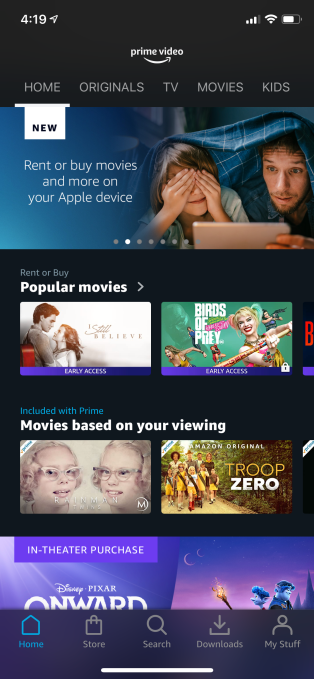 Amazon declined to comment, but confirmed to TechCrunch the feature is live now for customers in the U.S., U.K. and Germany.
Amazon declined to comment, but confirmed to TechCrunch the feature is live now for customers in the U.S., U.K. and Germany.
The change makes it possible for Prime Video users to rent or buy hundreds of thousands of titles from Amazonvideo catalog. This includes new release movies, TV shows, classic movies, award-winning series, Oscar-nominated films and more.
This is supported on a majority of Apple devices, including the iPhone, iPad and iPod touch running iOS/iPadOS 12.2 or higher, as well as Apple TV HD and Apple TV 4K.
Amazon for years has prevented users from directly purchasing movies and TV shows from the Prime Video app on Apple devices. Thatbecause Apple requires a 30% cut of all in-app purchases taking place on its platform. To avoid fees, many apps — including not only Amazon, but also Netflix, Tinder, Spotify and others — have bypassed the major app platforms& fees at times by redirecting users to a website.
Since the news broke, many have questioned if Amazon had some sort of deal with Apple that was making the change possible — especially because it didn&t raise the cost of rentals or subscriptions to cover a 30% cut.
As it turns out, it sort of does.
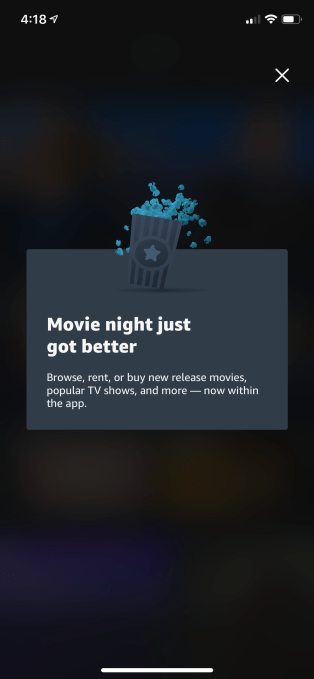
Apple tells TechCrunch it offers a program aimed at supporting subscription video entertainment providers.
&Apple has an established program for premium subscription video entertainment providers to offer a variety of customer benefits — including integration with the Apple TV app, AirPlay 2 support, tvOS apps, universal search, Siri support and, where applicable, single or zero sign-on,& an Apple spokesperson said. &On qualifying premium video entertainment apps such as Prime Video, Altice One and Canal+, customers have the option to buy or rent movies and TV shows using the payment method tied to their existing video subscription,& the spokesperson noted.
It remains to be seen if Amazon will extend Apple the same courtesy on its Fire TV platform, by allowing Apple customers to rent or buy movies directly in the Apple TV app there.
Amazonadoption of this program is notable, as it comes at a time when Apple is under increased scrutiny for alleged anti-competitive behaviors — particularly those against companies with a rival product or service — like Prime Video is to Apple TV+, or Fire TV is to Apple TV, for example.
Amazon called attention to the new feature in its Prime Video app, which now alerts you upon first launch that &Movie night just got better& in a full-screen pop-up. It also advertises the easier option for direct purchases through a home screen banner.
- Details
- Category: Technology Today
Therecrowdsourcing a problem, and then therecrowdsourcing a problem within NASA, where some of the smartest, most creative and resourceful problem-solvers in the world solve real-world challenges daily as part of their job. Thatwhy ituplifting to hear that NASA has issued a call to its entire workforce to come up with potential ways the agency and its resources can contribute to the ongoing effort to fight the current coronavirus pandemic.
NASA is using its crowdsourcing platform NASA @ WORK, which it uses to internally source creative solutions to persistent problems, in order to collect creative ideas about new ways to address the COVID-19 crisis and the various problems it presents. Already, NASA is engaged in a few different ways, including offering supercomputing resources for treatment research, and working on developing AI solutions that can help provide insight into key scientific investigations that are ongoing around the virus.
There is a degree of specificity in the open call NASA put to its workforce: It identified key areas where solutions are most urgently needed, working together with the White House and other government agencies involved in the response, and determined that NASA staff efforts should focus on addressing shortfalls and gaps in the availability of personal protective equipment, ventilation hardware and ways to monitor and track the coronavirus spread and transmission. Thatnot to say NASA doesn&t want to hear solutions about other COVID-19 issues, just that these are the areas where they&ve identified the most current need.
To add some productive time-pressure to this endeavor, NASA is looking for submissions from staff on all the areas above to be made via NASA @ WORK by April 15. Then there&ll be a process of assessing whatmost viable, and allocating resources to make those a reality. Any products or designs that result will be made &open source for any business or country to use,& the agency says — with the caveat that this might not be strictly possible in all cases depending on the specific technologies involved.
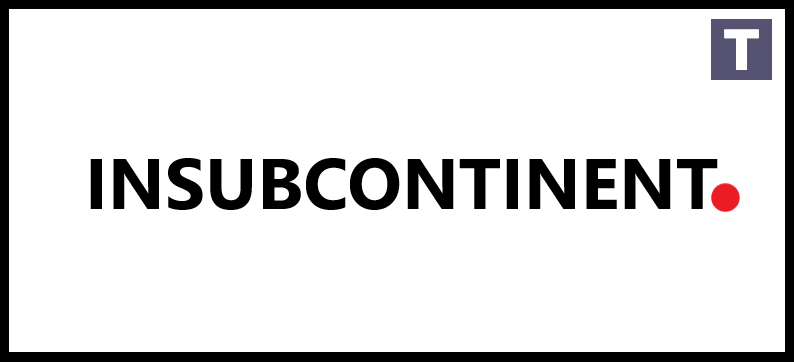
- Details
- Category: Technology Today
Read more: NASA concerns agency-wide crowdsourcing phone call for suggestions around COVID-19 action
Write comment (100 Comments)Vinyl has been coming back for the last few years, but unlike MP3s, CDs or even cassette tapes (also coming back), records aren&t easy to record on your own. This tiny toy record maker makes it easy, though you probably shouldn&t expect that famous vinyl sound quality.
The Easy Record Maker was created by designer Yuri Suzuki, who has been itching to do something like this for years.
&This idea has been my dream machine since I was teenager,& Suzuki told Dezeen. Digital media are easy to copy, but making your own vinyl has proven difficult. &Of course professional-use record cutting machines exist, but they are very expensive. As ita complicated process with records, there is no way to create them at home.&
Thatnot quite true — last year the Phonocut record maker hit Kickstarter and more than doubled its goal, but the large (think turntable plus hi-fi), $1,000+ machine is a bit more than many are ready to commit to. The tiny Easy Record Maker is meant to be a simpler, smaller option for people who want, for instance, to let their kids create their own records for fun. (This was done in the past when records were more common, but this is surely a more serious effort.)

The device cuts and plays five-inch records, of which it comes with 10, at both 33 and 45 RPM. Operating it is as simple as plugging a sound source — your phone, a mic, whatever — into the 1/8″ headphone jack and playing the content while the cutting head is in the groove. Put down the other head to play it back, or put the record in any other turntable.
The resulting records have a &nice low-fi sound,& Suzuki said, which is as much as admitting they don&t sound particularly good — but thatnot the point.
Hehoping that the device will make the idea and process of creating vinyl records familiar to a new generation, helping them appreciate the physical side of the medium and the value of a permanent object associated with music rather than a fleeting stream.
Thereno price yet, and no definite retailers, but expect the Easy Record Maker to be available later this year (certainly before the holidays) online and in a few stores in the U.S. and EU.
- Details
- Category: Technology Today
Read more: This adorable tiny record maker lets you cut your own 5-inch vinyl singles
Write comment (95 Comments)Like many other websites at the moment, the career-oriented networking platform LinkedIn has seen a big boost in traffic as a result of people being asked to work from home and stay indoors overall to slow the spread of the coronavirus, with a bump of 55% more conversational activity between existing connections in recent weeks. Now, to leverage that attention in a way thatmore directly helpful during this health crisis, LinkedIn is introducing new measures specifically around job listings.
From today and for the next three months, LinkedIn says it will provide free job postings for &essential& businesses globally — companies in healthcare, as well as warehousing, supermarket, freight delivery and nonprofits working in support or relief roles — in other words, those providing critical front-line services to keep the economy and society in motion. Healthcare will include companies working in areas like medical devices, medical practice (including hospitals) and mental health care.
Alongside this, LinkedIn is creating an &urgent jobs& board to give these openings more priority visibility. People whose skills match up with those needed for these jobs who visit LinkedInjobs homepage will see the special listings highlighted. Those who sign up for job alerts with matching skills will in turn get real-time alerts of the jobs as they get posted.
The volunteer ads also link up with an expanded Recruiting for Good program to help bring in more people to work with nonprofits in both volunteer and paid roles. And those doing the recruiting will also get three months of free access to LinkedIntalent insights tools to figure out where their (free) ads are best placed around hiring trends and more.
Organizations that have already signed up to use these include the American Red Cross of Los Angeles, the CommonSpirit Health hospital network, Doctors on Demand and New York Presbyterian Hospital.
The new initiatives underscore the bigger trend of how tech companies are looking to provide whatever assistance they can bring to the table in the midst of the coronavirus pandemic.
(Others include Google, which is trying to help with testing, while also providing a landing page for official and local information, while both Facebook and Twitter are trying to stamp out fake news while surfacing links to official organizations for help.)
Recruitment — which has traditionally been LinkedInbiggest revenue generator (as part of Microsoft, it does not regularly report financials on its business lines) — has been in an interesting position within that.
On the one hand, recruitment and its counterpart, employment, have been two of the essential levers in fighting this pandemic.
On the clinical front, hospitals and related care organizations are scrambling to keep up with the surge in demand for their services, leading to major recruitment drives to bring in people with relevant experience, in some cases going straight to the ranks of those who may have left the profession and now are being asked to step in again.
In the U.K., for example, some 4,500 doctors and nurses have so far answered an open call to come back into medical service (many will have moved on to other non-clinical or managerial roles in the NHS, or left the public sector, or the profession altogether, not just retired due to age), with more likely to come. And thatjust on the clinical front. We&re seeing a multitude of call outs across other sectors, like technology, to bring in experts in AI and other areas to help design software and hardware to slow the spread of the virus, to alleviate some of the side effects, to identify it faster and maybe even to potentially cure it.
In another vein, the closures of restaurants and public places has put a big shift on to supermarkets and other food providers to beef up their work forces to meet their rising demands. Thatmeant that while many people have lost their old jobs due to closures, they are getting opportunities to redeploy elsewhere.
(The same goes for the collective groundswell of people who have emerged as volunteers to help others who are in need, with hundreds of thousands volunteering to help deliver medications or other essential tasks to supplement the work of front-line healthcare providers.)
On another level, beyond addressing the pandemic in a direct way, employment and recruitment have become something of a canary in the coal mine when it comes to assessing how different sectors and the economy overall is faring, and how it will look when the pandemic starts to subside.
We&ve charted some notable developments of hiring freezes, layoffs and furloughs in the tech world already — as well as hiring boosts for those suddenly finding their businesses in huge demand — and the same thing is playing out across other sectors, a trend LinkedIn, as one of the bigger recruitment portals in the world, is well-positioned to see.
&The trend as the virus moves through the world has been a decline in job posts,& said Blake Barnes, LinkedInhead of careers and talent solutions. &Ita pattern we saw starting in China with the first wave of the pandemic.& Positively, he noted that &we have also seen that recovery brings growth as well.&
For now, LinkedIn has set some criteria in place to tailor eligibility. For example, nonprofit organizations that want to be a part of the Recruiting for Good program need to be U.S. 501c3 registered (or the global equivalent), providing disaster response or services for COVID-19 relief. Hospitals that want to be a part of the Recruiting for Good program (but not for the general critical recruitment drive) need to be in critical areas of coronavirus outbreak (based on impact data) and understaffed and in need of urgent clinical front-line workers for COVID-19 response.
Over time, there will likely be more types of businesses added to the mix of &essential& companies (for example, as a car parts company retools to become a ventilator maker) and nonprofits over time, and also more evolutions in how job ads get seen by people. The main point was to deploy quickly to start work as soon as possible.
&We are keeping a close eye on the situation, but we have already seen a critical talent shortage,& said Barnes. &We&re starting with the obvious companies, but we&re getting these tools to market where they are most needed. But things change every single day, so we&ll be assessing in real time to understand how different sectors are evolving and changing.&

- Details
- Category: Technology Today
Read more: LinkedIn's making its recruitment tools free to those battling the coronavirus pandemic
Write comment (90 Comments)Page 1066 of 1419

 10
10





